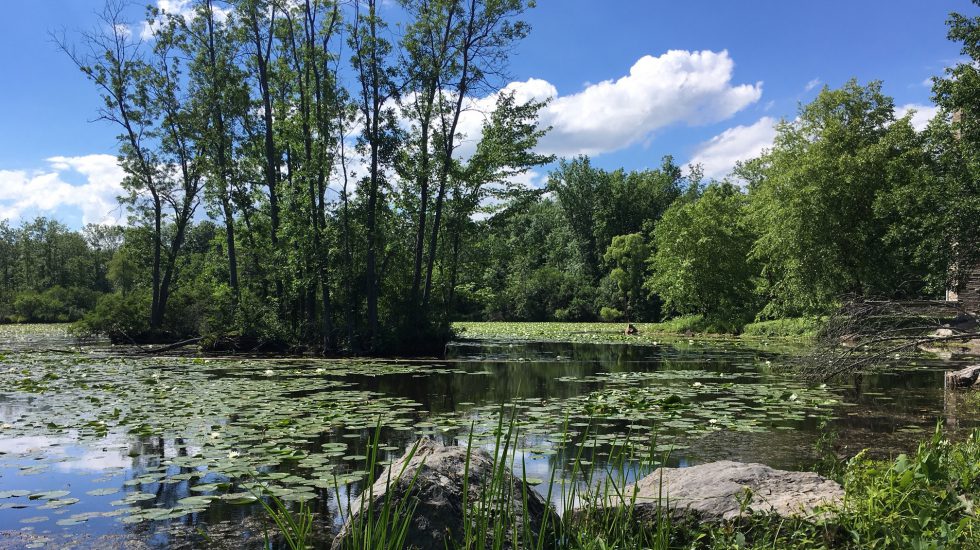Glimpses under a scenic pond’s surface
In the serenity of a sunny, low-humidity 75-degree afternoon in late June, I stood outside the Cornell Lab of Ornithology, beside Sapsucker Woods Pond in Ithaca, New York.
Dragonflies and red-winged blackbirds darted back and forth as a light wind rustled the foliage of shoreline alder and river birch.
My meditation with the birds, bees and breeze ended at the sight of a snake sliding quickly across and under the pond surface toward me. Not that I was scared of the reptile, but it stood out for its speed through what seemed like a sleepy landscape.
The snake was about 2 feet long and it swam with its head above water. This was a male northern water snake. Females are longer and heavier. June is breeding season for the species, with females giving birth to up to 40 babies later in summer.
The northern water snake is also curious: It is known for approaching people who are standing in water or on shore. No threat to humans, the snake eats insects, amphibians and fish.
The snake swam until it reached the shoreline, where it stopped, and then vanished.
Now, I began to notice and hear other activity in the shallow water.
First, there was a little turtle, with a shell the size of a pancake. Bubbling up to the surface from among the lily pads, this was a painted turtle, which is the nation’s most plentiful turtle species. Known for basking in the sun, the turtle eats both vegetation and small animals, such as crayfish.
Occasional “twangs” that emanated from around the pond were the mating calls of green frogs. These well-camouflaged amphibians often sit and wait on lily pads or vegetated shorelines to snare prey with sticky tongues that shoot out and back from their mouths.
Then I noticed that a hump of mossy vegetation in the pond was beginning to move. I wondered what that was about until the snapping turtle raised its large head from below the surface and blew water out of its huge nostrils.
This turtle’s upper shell — covered in moss, dead lily pads and grass stems — was the size of an extra-large round serving platter.
When the turtle lowered its head below the surface, that overgrown shell looked just like any other hummock of pond growth.
So much for my initial intent at the water’s edge, which was to focus my awareness on its beauty and sort of zone out.
Instead, I pursued the mind-bending surprises of life that rise to the surface in a lily-pad-covered pond.
